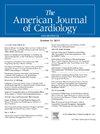Long-Term Outcomes in ICD: All-Causes Mortality and First Appropriate Intervention in Ischemic and Nonischemic Etiologies
IF 2.3
3区 医学
Q2 CARDIAC & CARDIOVASCULAR SYSTEMS
引用次数: 0
Abstract
Real-life data comparing the long-term outcome in patients with different heart diseases carrying an implantable cardioverter defibrillator (ICD) are scarce. This study aimed to compare the long-term risk of the first appropriate ICD intervention and overall survival in patients with ICD and heart disease of different etiologies. Patients with an ICD implanted between January 1, 2010, and December 31, 2022, followed in our center were included. Study outcomes were all-cause mortality and first appropriate ICD intervention. A comparison between ischemic heart disease (IHD) and non-IHD (NIHD) was performed. In NIHD different etiologies of dilated cardiomyopathy (DCM) were analyzed. Overall, 1184 patients (592 IDH; 592 NIHD) were included. During a median follow-up of 53 months all-cause death occurred in 399 patients (34%) whereas first appropriate ICD intervention occurred in 320 (27%). All-cause mortality was significantly higher in IHD vs NIHD patients (60% vs 43%; p <0.0001) but no differences in appropriate ICD intervention rate at 10 years (34% vs 40%; p = 0.125) were observed. In patients with NIHD, a higher 10-year mortality rate was found in valvular heart disease, post-radio/chemotherapy DCM (rctDCM), and hypertensive DCM. Hypertrophic cardiomyopathy, alcoholic DCM, and rctDCM were the least arrhythmic phenotypes in NIHD. Of note, inappropriate interventions in alcoholic DCM and rctDCM were higher than appropriate ones. In conclusion, the rate of ICD-appropriate interventions and mortality is different according to the etiology of heart disease and cardiovascular risk profile; this should be taken into consideration in the prognostic stratification of these patients at the time of implantation.
ICD 的长期疗效:缺血性和非缺血性病因的全因死亡率和首次适当干预。
背景:比较植入式心律转复除颤器(ICD)的不同心脏病患者长期预后的真实数据很少:目的:比较 ICD 和不同病因心脏病患者首次适当 ICD 介入的长期风险和总生存率:方法:纳入本中心 2010 年 1 月 1 日至 2022 年 12 月 31 日期间植入 ICD 的患者。研究结果为全因死亡率和首次适当的 ICD 干预。对缺血性心脏病(IHD)和非缺血性心脏病(NIHD)进行了比较。对 NIHD 中扩张型心肌病(DCM)的不同病因进行了分析:结果:共纳入 1184 名患者(592 名 IDH - 592 名 NIHD)。在中位 53 个月的随访期间,399 名患者(34%)全因死亡,320 名患者(27%)首次接受了适当的 ICD 干预。IHD患者的全因死亡率明显高于NIHD患者(60%对43%;P结论:根据心脏病的病因和心血管风险状况,ICD 适当干预率和死亡率有所不同;在植入时对这些患者进行预后分层时应考虑到这一点。
本文章由计算机程序翻译,如有差异,请以英文原文为准。
求助全文
约1分钟内获得全文
求助全文
来源期刊

American Journal of Cardiology
医学-心血管系统
CiteScore
4.00
自引率
3.60%
发文量
698
审稿时长
33 days
期刊介绍:
Published 24 times a year, The American Journal of Cardiology® is an independent journal designed for cardiovascular disease specialists and internists with a subspecialty in cardiology throughout the world. AJC is an independent, scientific, peer-reviewed journal of original articles that focus on the practical, clinical approach to the diagnosis and treatment of cardiovascular disease. AJC has one of the fastest acceptance to publication times in Cardiology. Features report on systemic hypertension, methodology, drugs, pacing, arrhythmia, preventive cardiology, congestive heart failure, valvular heart disease, congenital heart disease, and cardiomyopathy. Also included are editorials, readers'' comments, and symposia.
 求助内容:
求助内容: 应助结果提醒方式:
应助结果提醒方式:


